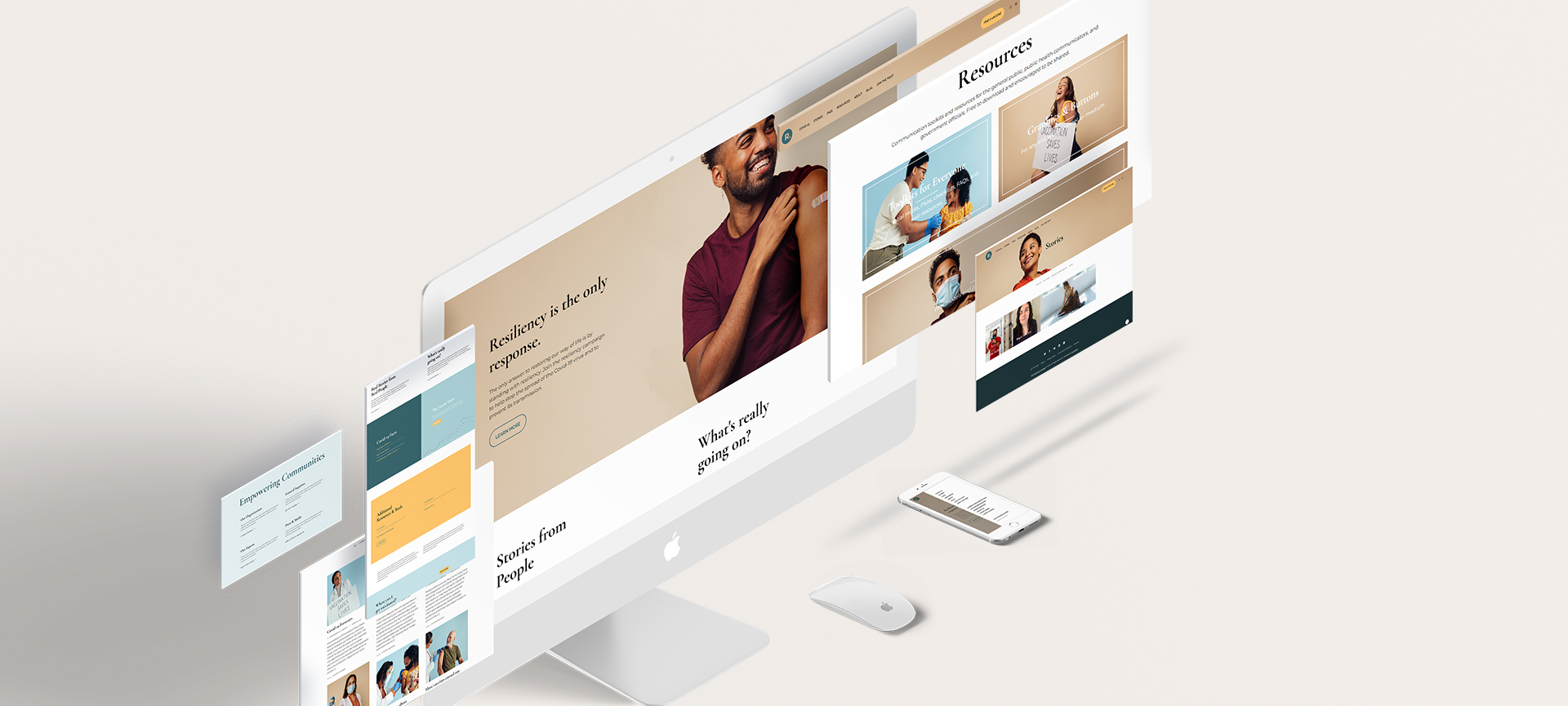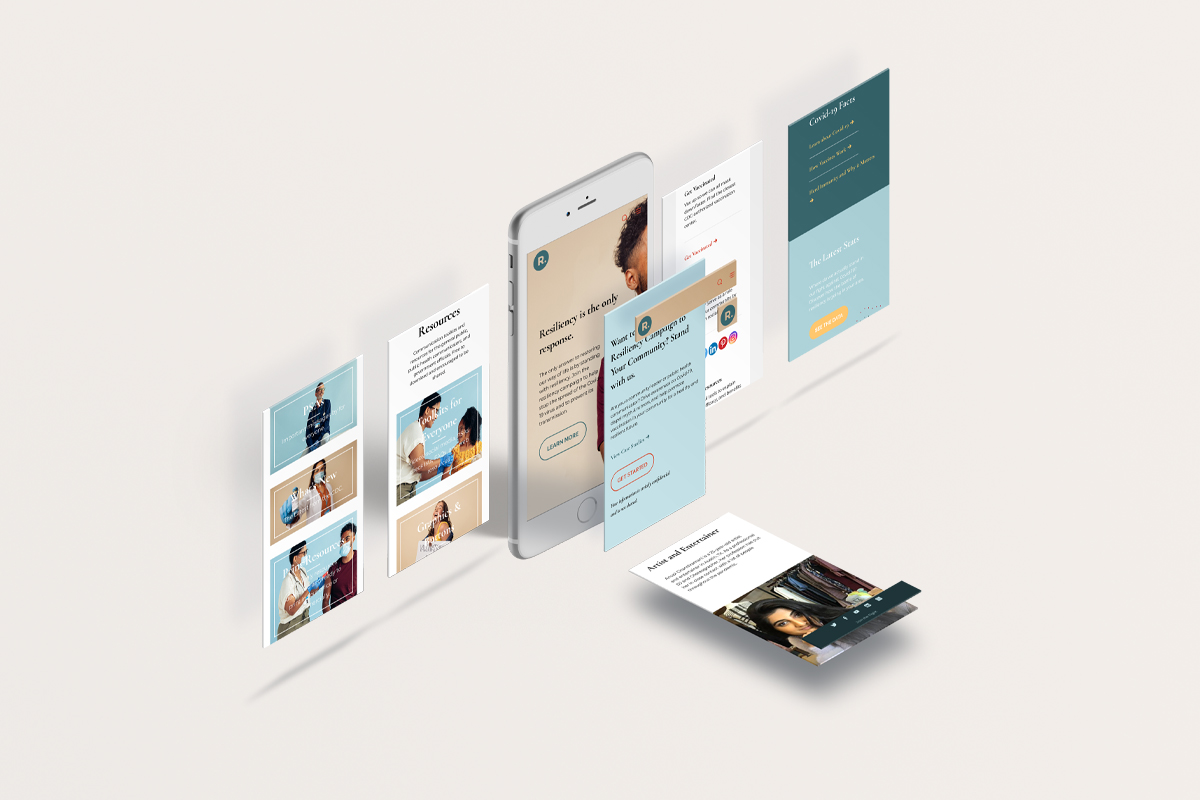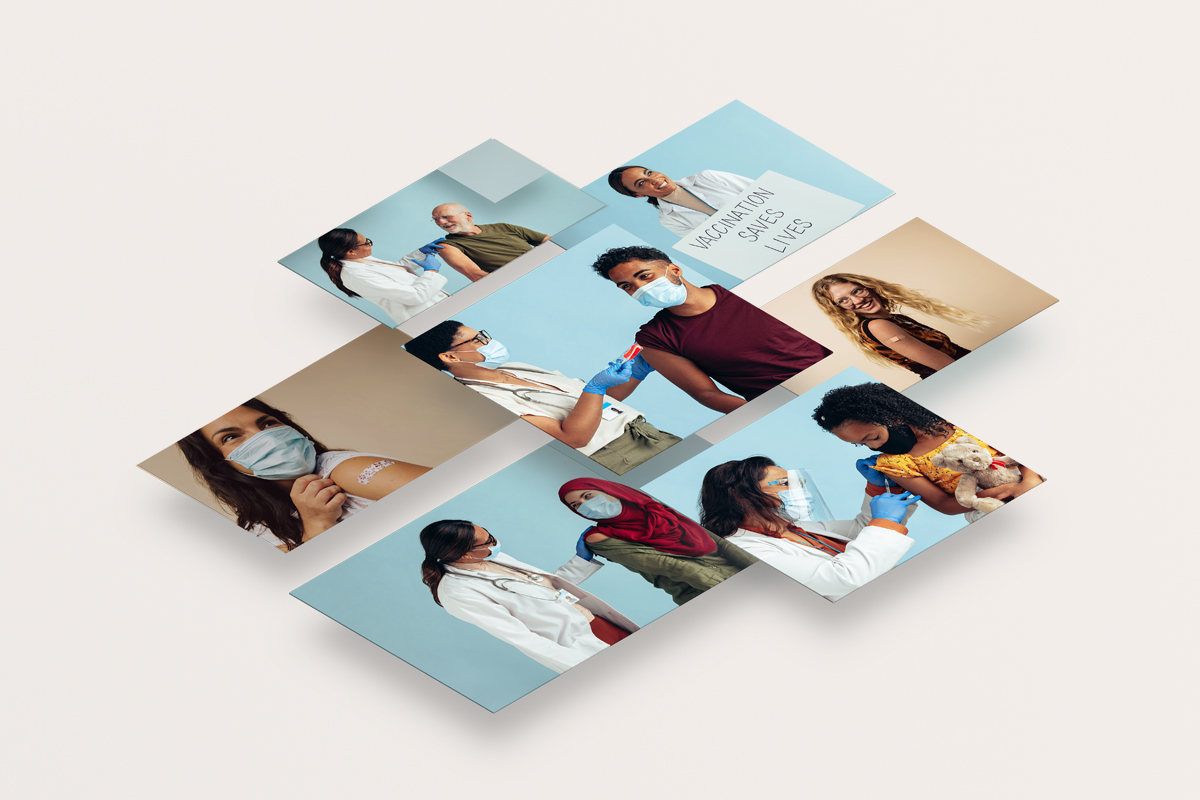Resiliency is the only response.
Backed by federal, state, and local government organizations, the Resiliency project was a nationwide campaign to promote public health behaviors surrounding COVID-19. The campaign focused on creating the building blocks for public health leaders to reach diverse demographics effectively.
Background.
When Covid19 hit, many people were left concerned and scared for their future and safety. Thankfully, Public health officials provided vital information that ensured the safety of us and our loved ones. But at the same time, misinformation about coronavirus began spreading, preventing the truth from getting to those who needed the most. The Resiliency project was a way to spread awareness about COVID-19 and bring objective truth back into the conversation.
We partnered with federal, state, county, and local agencies to combat this disinformation and fear during the height of the pandemic. Our goal was to create a peer-modeled solution to help give public health leaders the framework they needed to enact successful campaigns.
Challenge.
The campaign would target diverse demographics, including Caucasians, BIPOC, and undocumented individuals. With each group having a different reason for refusing to get the vaccines, our first challenge was creating a peer modeling solution that could connect to them regardless of their beliefs, values, or language.
Scaling would be another challenge. This was because the campaign was intended to help public health leaders who had their own campaign plans with the funding they received. Therefore, when developing the framework, we would have to ensure that every state, county, and city municipal would be free to adapt the modeling to their individual needs.
And since the project was more about saving lives and less about gaining new contracts, we had to make a structure while considering how others could easily replicate our system for their benefit and the benefit of the public.
Campaign.
After several meetings with some of the world’s top public health leaders across the country, our team created a campaign fashioned after Dr. Alfred McAlister’s peer modeling approach.
We made an in-depth process where we shared our methodology directly with public health leaders, communicators, and other government institutions. As a result, public health officials were also allowed to submit proposals and receive funding for their projects and campaign. This led to multiple states allocating money for their public health safety projects.
Our team also developed a website that targeted public health officials and the general public. It provided stories and accurate information about COVID-19 and the vaccines. Also, it created a place where people could participate in the campaign by offering them an opportunity to speak with a subject matter expert. Finally, visitors could get information on how to bring awareness to their community.
We also leveraged social media by running campaign ads on different channels, such as TikTok and Instagram, and in various formats for a more extensive demographic reach.
Results.
By the end of the campaign, we successfully connected with all our targeted audiences in California, Georgia, New York, Illinois, and every other state whose public health leaders were present during the initial meetings. Overall, we were able to reach almost half of the American population, with 30 million people in the state of Texas alone.
The peer modeling solution we made was considered so effective that it was published in an academic paper citing DR. Alfred McAlister and our team members as notable contributors to the campaign’s effectiveness.
This concept, created by our team, ended up getting modeled and replicated throughout the US, especially in the southern portion of America, quickly becoming the foundational framework for future campaigns.
FIVE
The achievements of the Resiliency campaign mainly depended on understanding the targeted demographics.
We worked with multiple public health leaders and were given information regarding their audience. After our detailed research, we knew our targets included conservative Caucasians, undocumented civilians, and multiple BIPOC groups.
We found that these groups were centered in less educated areas across the US and were more likely to consume misinformation regarding the vaccine due to language barriers, government distrust, political values, or lack of access to resources. In response, our team had to ensure that our campaign included content that would best connect to each specific group.
And in order to know that our information would be delivered directly to their areas, online and offline, we set up ads running on multiple social channels and broadcasting television. Because of this, we were able to see the real-life impact on our audience as they continued to see these ads.
ONE
After targeting social channels and platforms that would help serve the campaign, the next step in our approach was to make a hyper-targeted campaign solution. When meeting with public health leaders, we noticed that while they knew the importance of communication to reach their audience, the problem involved effectively motivating and educating them on a state and local level.
Our job was to give recommendations on how to solve misinformation concerning the coronavirus and beyond. We then started our work to deliver an overarching campaign that helped serve as a marketing structure for public health leaders to use in their future campaigns. This is where our peer modeling framework came in.
Fashioned after our work with UT Health Science Center and UTHealth School of Public Health, we partnered again with Dr. Alfred McAlister. Our team operated alongside his peer modeling approach, using behavioral journalism and psychology to encourage and motivate our targeted audience.
We made this our foundation and began working with public health leaders, government officials, and other institutions who would be spearheading their own public health campaigns. And after identifying our demographics and releasing the models that would work with each campaign, we were then able to accurately measure the data coming in from the clinics and contact tracing.
TWO
Thanks to Dr. McAlister’s acclaimed peer-modeled approach and our 5-1-2 framework, the entire campaign reached close to 150 million people across the US, proving again how practical the peer modeling structure is for public health campaigns.
The campaign’s launch and success were ultimately accelerated due to our knowledge of social media and how it can affect the public.
We saw how false information that came from Russia mixed with conservative messages in America. This led to scaremongering within the community while fostering myths and half-truths about the COVID-19 vaccines.
Our team met this disinformation and dived right in. We worked to get in front of the lies and created the foundational structure that could be used for all future public health campaigns nationwide.
The Work.


Created a content sharing platform to proliferate peer-model stories, graphics, resources, and PSA to combat Covid-19.


Easy to navigate mobile-first design featuring a comprehensive approach to scaling the fight against the coronavirus at the last mile across the country.


Inclusive art direction speaking to a vast diaspora of people.
Press
Foundry512 is tackling public health challenges in a new way...